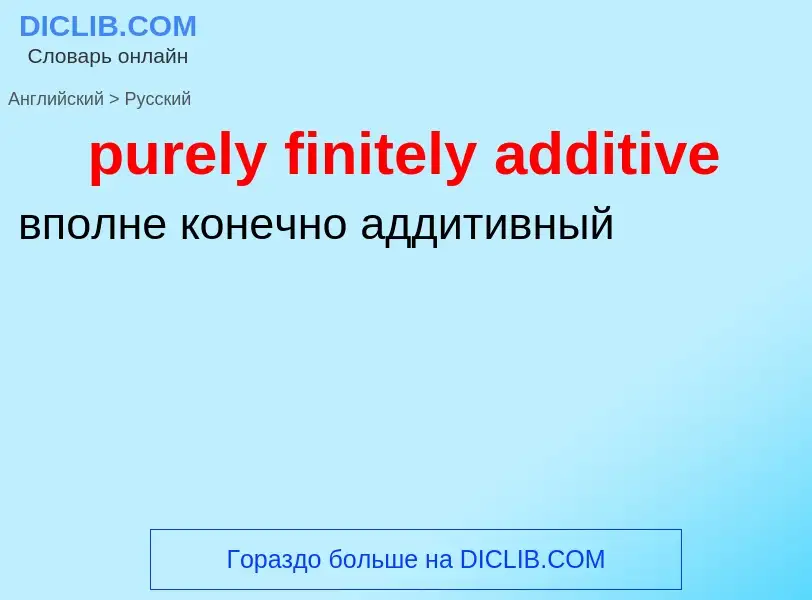Перевод и анализ слов искусственным интеллектом
На этой странице Вы можете получить подробный анализ слова или словосочетания, произведенный с помощью лучшей на сегодняшний день технологии искусственного интеллекта:
- как употребляется слово
- частота употребления
- используется оно чаще в устной или письменной речи
- варианты перевода слова
- примеры употребления (несколько фраз с переводом)
- этимология
purely finitely additive - перевод на русский
общая лексика
смешение цветов путем сложения
Определение
Википедия
In mathematics, a content is a set function that is like a measure, but a content must only be finitely additive, whereas a measure must be countably additive. A content is a real function defined on a collection of subsets such that
In many important applications the is chosen to be a Ring of sets or to be at least a Semiring of sets in which case some additional properties can be deduced which are described below. For this reason some authors prefer to define contents only for the case of semirings or even rings.
If a content is additionally σ-additive it is called a pre-measure and if furthermore is a σ-algebra, the content is called a measure. Therefore every (real-valued) measure is a content, but not vice versa. Contents give a good notion of integrating bounded functions on a space but can behave badly when integrating unbounded functions, while measures give a good notion of integrating unbounded functions.


![[[James Clerk Maxwell]], with his color top that he used for investigation of color vision and additive color [[James Clerk Maxwell]], with his color top that he used for investigation of color vision and additive color](https://commons.wikimedia.org/wiki/Special:FilePath/J C Maxwell with top.jpg?width=200)

